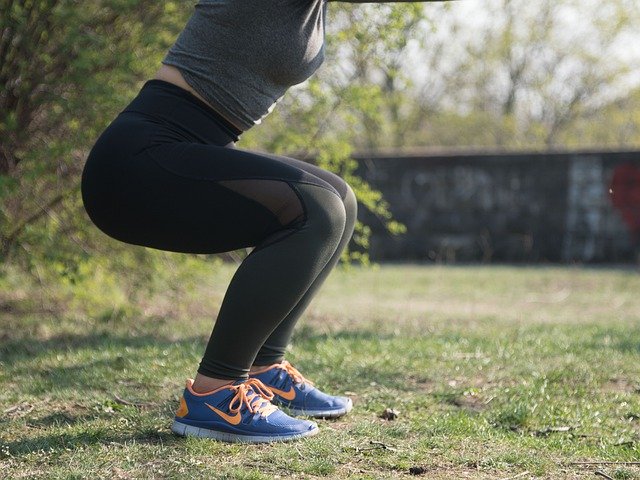
Can you feel it? Spring is here, which is usually a good thing until you notice the weight you’ve gained during the past several months.
Yes, winter weight gain is a real thing. Studies have found that many of us pack on the pounds through the colder months no matter what we do to try to avoid it. However, when spring comes, we want to get back in shape so that we can fit into our lighter clothes and enjoy our fun spring activities.
That can be easier said than done, however. Below, we tell you why it’s so hard to avoid winter weight gain and what you can do to get rid of it.
Why Winter Weight Gain Is Nearly Inevitable
In a 2015 study, scientists noted that we do tend to gain a little weight during the holiday season and, what’s worse, we usually don’t lose it during the spring or summer. That means that, through the years, we gain more and more weight, until we wake up one day and realize we’re officially overweight or, worse, obese.
Women also admitted in a large survey that they gained weight during the winter months. Nearly two-thirds said they put on up to 6 pounds, with the average weight gain landing at around 4.5 pounds. Half of them blamed the weather, saying they ate more comfort foods on cold and dark days, and more than one-third of them said the weather limited their workouts.
Indeed, there are many reasons why weight gain is difficult to avoid in winter. Here are some of the factors working against us:
- We don’t exercise as vigorously in the winter because the weather discourages us from going outside
- The cold weather causes us to crave heavy comfort foods
- Evolutionarily speaking, we are programmed to store fat in the winter months
- Many of us are exposed to less sunlight in the winter
In a 2006 study, researchers followed nearly 600 people for a one-year period and found that they ate more in the fall compared to the spring ― an average extra of 86 calories per day ― and also did less physical exercise when the temperatures fell.
A more recent study found that a drop in exposure to the sun could also be a major factor in winter weight gain. Scientists found that the fat cells that lie just under the skin shrink when exposed to the blue light emitted by the sun. When we get out into the sunlight, our cells don’t store as much fat.
Senior author Peter Light noted, “If you flip our findings around, the insufficient sunlight exposure we get eight months of the year living in a northern climate may be promoting fat storage and contribute to the typical weight gain some of us have over winter.”
Suffice to say it’s tough to avoid putting on a couple of extra pounds between November and March. However, as the weather warms up, it is important to do something about it to avoid that long-term weight gain that can threaten our health.
10 Tips for Shedding Winter Weight
1. Weigh Yourself Daily
You may have stopped using the scale over the winter because its messages were too depressing, but it’s time to drag it out again. Studies show that weighing yourself regularly typically results in more weight loss than avoiding the scale.
In a 2009 study, for example, researchers followed slightly more than 60 obese adults and found those who weighed themselves more often during a six-month period lost more weight than those who didn’t. In a later study, those who focused on daily weighing for six months lost about 13 more pounds compared to those weighing less than that.
2. Get Out in the Sun
As noted above, the sun can have a large influence on the fat in your body. Not only does exposure to the sun tend to shrink fat cells, but it also wakes up the “wake” hormones in your body, helping you to feel more energy, which is likely to translate to more movement throughout the day.
Do your best to get some sun first thing in the morning. According to a Northwestern Medicine study, people who had most of their daily exposure to even moderately bright light in the morning had a significantly lower body mass index (BMI) than those who had most of their exposure later in the day. Try an early morning walk or jog for 20 to 30 minutes.
3. Schedule in Another Activity
We typically feel the urge to get outside more as the weather warms up, so embrace this desire by adding another activity to your daily schedule. Take a walk after lunch or dinner, meet your friends for an after-work game of softball, grab your partner and go dancing a few times a week or sign up for a bowling league.
The more movement you can incorporate into your day, the easier it will be to shed winter pounds. Choose something you know you’ll enjoy, and you’ll be more likely to stick with it. Some more ideas include going for an after-work bike ride, walk with the dog or perform a yoga routine in the park.
4. Fast Intermittently
If you haven’t tried intermittent fasting yet, now is the time. It’s a super-effective way to shed pounds, and if you time it right, it doesn’t have to be painful.
Here’s how it works. Between meals, as long as you don’t snack, insulin levels drop and fat cells release stored sugar to be used as energy. That results in gradual weight loss. The key is to allow those insulin levels to go down long enough to burn off the fat.
Although we used to think we had to go a full 24 hours without eating for this to work, now we know better. You can restrict your eating hours and receive the same benefits. A couple of options:
- Fit all your meals into a 12-hour period, say between 8 a.m. and 8 p.m. Then, don’t eat again until 8 the next morning. This method works well for new fasters and may be all you need to shed winter weight.
- Fit all your meals into an eight-hour period, say 8 a.m. to 4 p.m., then don’t eat again until 8 the next morning. This is a more extreme option. You may want to save it until after you become an experienced faster.
This type of fasting can help you lose those winter pounds and, even better, improve insulin sensitivity, reduce inflammation and lower blood pressure. Most people also experience a decrease in appetite when doing it. However, after getting over the initial hump, they don’t feel overly hungry.
Start with an intermittent fast just once or twice a week — on Wednesdays and Saturdays, for instance.
5. Drink More Water
One of the easiest ways to lose extra pounds is to replace any calorie-laden drinks you usually consume, such as soda, alcohol and fruit juice, with plain or sparkling water. You’ll save the calories, and you may also help reduce cravings for snacks throughout the day.
Then, make a point to drink a full glass of water before each meal, which will help you eat less during that meal. Researchers found in one study that drinking about two cups of water 30 minutes before eating a main meal helped participants lose weight.
Those who drank water before all three main meals of the day lost an average of 9.5 pounds over 12 weeks while those who drank it before just one meal or not at all lost 1.76 pounds.
6. Eat Slowly and Stop Early
Do you tend to eat and run? If so, that won’t help you lose weight. Eating fast usually translates to eating more as it takes at least 20 minutes for the brain to register the feeling that you’re full.
When it’s time to eat, take your time. Chew slowly and pause more often. Be aware of the tastes and textures. The longer you take, the more likely you will be to eat less. If you start to feel full, and you still have food on your plate, put your napkin over it. It works — it helps you to avoid eating more. Save the leftovers for later.
7. Get 7 to 8 Hours of Sleep Per Night
When you don’t get enough sleep, your hormones go out of whack. Research shows that a common result is an increase in the hunger hormone, which compels you to eat more fatty, sugary snacks that result in weight gain.
Sleeping too much can have the same outcome. Ideally, you want to get seven to eight hours of quality sleep per night. If you’re having trouble, talk to your doctor, and then be sure to keep your room cool and quiet, leave all technology out, and make sure you have a comfortable mattress.
8. Take Less Food
Portion control works when it comes to losing weight, but it can be hard to do it without feeling deprived. Here are a few tricks that will help:
- Use smaller plates as research shows it helps you to eat less at meals.
- Eat slowly because you’ll be more likely to feel full.
- Take less than you think you’ll need the first time — you can always go back if needed.
- When eating out, ask them to package up half the entree in a to-go bag because restaurants are notorious for serving too much food).
- Fill more of your plate with vegetables or salad and less meat and carbs.
- Never eat straight from the container — always measure it out.
- Drink more water and tea to help you feel satisfied.
9. Get Strong
Muscles help burn calories even while you’re at rest. You may have lost some over the winter if you weren’t as active, so now is the time to tone up again. Try the following easy exercises to challenge your muscles, or head to the gym for a weightlifting routine:
- Planks
- Squats
- Push-ups
- Lunges
- Jumping jacks
- Single-leg deadlifts
- Sit-ups or crunches
10. Put More Fun Into Your Day
Many times, we turn to food at the end of the day as a reward. It’s easier to avoid this type of emotional eating if you schedule some sort of activity in your day that leaves you emotionally satisfied. This could be time out with friends and loved ones, a creative activity that allows you to express yourself like art or music, taking part in a team sport or even just taking a walk around the mall or neighborhood.
Look for activities that will engage your mind, body and senses so that when you get back home at the end of the day, you feel “filled up” and relaxed emotionally. This can help make it easier to avoid late-day snacking, which almost always leads to weight gain.
We all know how important it is to maintain a healthy lifestyle, especially during the cold winter. So, if you want to stay healthy all year long – this program is the perfect fit. So check out this Winter Wellness Bundle now!







